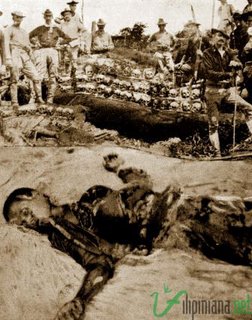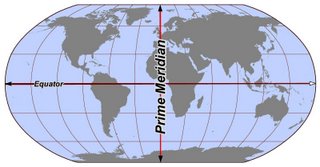
Yesterday, September 11, we remember that day as the beginning of the “War on Terror”. Not surprisingly, the current US president, George W. Bush, decides to go cowboy on his so-called “War on Terror”. 5 years later…what happened already on his campaign? Nada! Personally, this “War on Terror” is nothing more but a stupid, cowboy rodeo of Bush.
Call this a déjà vu but I just remembered how the big US of A decided to wage war against “terrorist” and “insurgents” here in the Philippines. And what an irony because it was in Mindanao that one of the bloodiest episode of the Philippine-American War took place: the Battle of Mt. Bud Dajo.
100 years ago, 1906 to be exact, Mt. Bud Dajo was the bastion of Muslim Resistance against the American troops invading Mindanao. The Americans succeeded in capturing the mountain but at a terrible price. 600 Muslim men, women and children were massacred who were courageously resisting the Americans despite the odds that they only have bolos, faith in Mohammed and the desire for freedom. Mt. Bud Dajo, therefore, became a sacred mountain to all the Filipino Muslims as a remembrance of the bravery of their ancestors and remembers the fallen that shed blood and tears for freedom.
 100 years later, American troops cannot shake the ghosts of their fore bearers and the massacre continues to haunt them. Despite telling natives to “forgive, forget and move on”, how can these people moved on with history when innocent lives were lost to aggressive Americans who dreamed of an empire in Asia? How can Filipino Muslims, terrorist of not, dealt with the fact that the Americans defiled and desecrated Mindanao with their atrocities? It’s hard and history should not be forgotten like a children’s fight of yesterday.
100 years later, American troops cannot shake the ghosts of their fore bearers and the massacre continues to haunt them. Despite telling natives to “forgive, forget and move on”, how can these people moved on with history when innocent lives were lost to aggressive Americans who dreamed of an empire in Asia? How can Filipino Muslims, terrorist of not, dealt with the fact that the Americans defiled and desecrated Mindanao with their atrocities? It’s hard and history should not be forgotten like a children’s fight of yesterday.
"I think it's just important that we not be held hostage to history," US Army Colonel James Linder, the top American commander in the Philippines, told villagers in Jolo's provincial capital in Patikul. Err…dear Colonel Linder, did your American History textbook deodorized and cut the pages of this shameful past of the US in the Philippines wherein The killings were denounced by many Americans at the time, including Mark Twain?
Of course Colonel Linder’s countered…"I won't stay here and make an excuse for something that happened 100 years ago," he said. "We truly do mean to do good things to the people in this island," he said. Well said but when will your government and the American people will acknowledge this history was America’s greatest blunder and the most atrocious?
A US Embassy officer, Stephen Ashby, said he would convey the apology demand to American officials.” It saddens me that that happened and ... the American people at the time spoke out on that issue," he said, adding that one of the great things about the U.S. is that "when our government or our military makes a mistake, we hold them accountable because they serve us." Linder explained that the American troops who are here now had no involvement in Jolo's war and urged villagers to cast aside biases in judging his men.
I hate to say this but no matter how “humanitarian” it is, the bloody hands of your fore bearers are still fresh on these people. Take it slow Mr. Ashby and in the next 100 years, perhaps, before these people will be your friends again.
(Blogger’s Note: some parts of this blog is taken at Philippine Daily Inquirer “As Americans mourn 9/11, Filipinos bewail 1906 Jolo killings” Sept. 11, 2001.)
 But in 1998, during the Philippine Centennial Commission Reading, a surprise came when the original logbook of the Magellan voyage was presented. There in the logbook was a complete log of coordinates of the voyage. And as it seems to put the issue to rest, the coordinates fit exactly at Limasawa! Problem solved…not.
But in 1998, during the Philippine Centennial Commission Reading, a surprise came when the original logbook of the Magellan voyage was presented. There in the logbook was a complete log of coordinates of the voyage. And as it seems to put the issue to rest, the coordinates fit exactly at Limasawa! Problem solved…not. foundation in 1667 up to 1914!
foundation in 1667 up to 1914! For sure the Paris and the Greenwich Meridian is out of the question. The Paris Meridian will only come during the 1667 while the Greenwich Meridian will only be adapted in 1884. Was it the Seville Meridian? It is possible because
For sure the Paris and the Greenwich Meridian is out of the question. The Paris Meridian will only come during the 1667 while the Greenwich Meridian will only be adapted in 1884. Was it the Seville Meridian? It is possible because 










